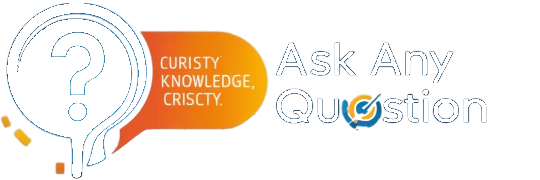This comprehensive guide is designed to help you navigate the exciting journey of launching your own podcast. I’ll walk you through each step, from selecting your niche and acquiring the right equipment to recording and publishing your episodes. Starting a podcast can feel overwhelming, but with the right approach, you’ll avoid common pitfalls and build a strong foundation for your show. Whether you want to share your passion or grow your brand, I’m here to help you turn your ideas into captivating audio content that engages and grows your audience.
Crafting Your Podcast Concept
Identifying Your Niche and Audience
Pinpointing your niche sets the foundation for your podcast’s success. I recommend narrowing down your focus to a specific topic or industry where you can deliver valuable insights. For instance, instead of a broad “health” podcast, you might choose “mental wellness for remote workers.” This sharpens the appeal and attracts a defined audience. Tools like Google Trends and social media groups help gauge audience interest and size, ensuring you’re addressing a real need rather than a vague curiosity.
Developing Your Unique Angle
Standing out requires carving a unique angle that reflects your voice and offers something listeners can’t find elsewhere. I suggest blending your background, storytelling style, or unconventional perspectives. Maybe you bring humor to serious topics or share firsthand experiences few others can. This authenticity builds connection and loyalty, differentiating your podcast in a crowded market.
Expanding on developing your unique angle, consider how podcasts like “The Moth” excel using personal narratives that transform ordinary stories into unforgettable lessons. Analyze your own skills or passions—if you have an engineering background, infusing technical insights with approachable explanations could attract a niche yet engaged audience. Experimenting with episode formats, such as interviews combined with solo commentary or interactive listener segments, further defines your podcast’s character. These creative choices not only solidify your brand but also make your content a destination for listeners seeking depth and freshness in your chosen subject.
Essential Equipment and Software Choices
Must-Have Podcasting Gear
A reliable microphone like the Audio-Technica ATR2100x is a game-changer for clear audio quality, and pairing it with a USB audio interface expands flexibility if you upgrade later. I always recommend headphones such as the Sony MDR-7506 for accurate sound monitoring during recording sessions. A pop filter and adjustable boom arm also enhance your recording setup by reducing unwanted noise and making mic positioning more comfortable, which ultimately improves your listener’s experience.
Selecting the Best Editing Software
Choosing the right editing software depends on your budget and skill level. Audacity is an excellent free option that supports multi-track editing and a variety of effects, making it popular among beginners. For those ready to invest, Adobe Audition offers advanced features like noise reduction, automated speech alignment, and seamless integration with other Adobe apps, speeding up your post-production process.
Beyond basic trimming and noise reduction, I find that Adobe Audition’s spectral frequency display helps identify and fix audio imperfections that are invisible in waveform views. Additionally, its batch processing capabilities save hours when editing multiple episodes or remastering older audio files. For podcasters scaling up, these advanced tools improve both efficiency and audio polish, which listeners will appreciate.
Structuring Your Episodes for Maximum Engagement
Designing each episode with a clear structure keeps your listeners hooked and eager for more. Start with a strong hook or teaser that previews the episode’s main highlight, followed by a smooth introduction. Segment your content into digestible parts, using consistent transitions to maintain flow. Wrapping up with a memorable conclusion or call-to-action ensures your audience feels satisfied and knows how to engage further. Podcasts like “How I Built This” utilize this pattern, balancing storytelling with actionable insights that create a loyal listener base.
Creating a Compelling Format
Your podcast’s format sets the tone and style, influencing listener expectations. Whether you choose interviews, solo narratives, or roundtable discussions, consistency helps build familiarity. For instance, a weekly 30-minute interview show might include segments like a brief guest intro, main discussion, a lightning round, and listener Q&A. Experiment with pacing and segment length until you find a rhythm that suits both your content and your audience’s attention span.
Mastering the Art of Storytelling
Storytelling transforms facts into experiences that resonate deeply with listeners. Using vivid imagery, emotional arcs, and relatable characters compels your audience to stay engaged. Podcasts like “The Moth” excel by crafting narratives that evoke empathy and reflection, making content memorable and shareable. I encourage you to weave your facts and insights into a story framework that captures attention from start to finish.
Delving deeper, effective storytelling hinges on structure—introducing a conflict or problem early, navigating through a journey or struggle, and delivering a resolution or insight that offers value. Incorporate pauses for emphasis, use varied vocal tones to convey emotion, and describe scenes as if the listener were there. For example, painting a detailed picture of a startup founder’s challenge humanizes the story, fostering a stronger connection. This method not only sustains interest but also enhances retention and emotional impact, making your podcast episodes truly unforgettable.
Navigating Distribution Platforms and Promotion Strategies
Getting your podcast heard means finding the right distribution channels and promotion tactics to reach your ideal audience. I focus on platforms like Spotify, Apple Podcasts, and Google Podcasts, which dominate listener traffic, ensuring my show is where people already look for content. From there, I investigate promotion through targeted strategies that boost discoverability. Your distribution choices directly impact growth potential, so I carefully consider each platform’s unique audience and analytics tools before committing.
Choosing the Right Hosting Service
Selecting a podcast hosting service sets the foundation for how smoothly your episodes reach listeners. I recommend services like Libsyn or Buzzsprout, known for their reliable uptime, detailed analytics, and easy integration with major directories. Features such as customizable RSS feeds, episode scheduling, and monetization options matter a lot when scaling your show. Hosting costs vary, so balancing budget with performance needs ensures long-term success without unexpected hurdles.
Leveraging Social Media for Growth
Social media acts as a powerful tool to connect with listeners beyond the podcast episode itself. I leverage platforms like Instagram for visual snippets, Twitter for engaging conversations, and LinkedIn to tap into professional audiences. Engaging content combined with consistent posting schedules helps build a loyal community. Hashtags tailored to your niche and collaborations with other podcasters amplify reach effectively, turning casual listeners into enthusiastic followers.
Digging deeper into social media, I often create episode teasers and pull quotes to spark curiosity, using Instagram Stories and Reels for dynamic snippets. Twitter Spaces has also become a valuable extension, hosting live discussions that generate real-time engagement. Additionally, targeted Facebook groups offer niche communities where I can share episodes organically and gather feedback. This multi-platform strategy expands listener engagement and creates multiple entry points for discovery.
Building Your Podcast Community
Growing a loyal audience requires deliberate actions to create a space where listeners feel connected and valued. I focus on creating multiple touchpoints, from social media groups to live Q&A sessions, to enable direct interaction. Personalizing responses and acknowledging individual contributions help transform casual listeners into community members. Leveraging platforms like Discord or Facebook Groups can amplify engagement, as they foster ongoing dialogue beyond episode releases. A consistent, approachable presence invites trust, making your podcast more than just content—it becomes a shared experience.
Engaging with Your Listeners
Active engagement means going beyond posting episodes and waiting for feedback. I host regular polls on Instagram and Twitter to understand audience preferences, which informs my content choices. Replying to listener comments, featuring their questions in episodes, and spotlighting their stories adds a personal touch. Offering sneak peeks or behind-the-scenes glimpses through newsletters or Stories keeps interaction dynamic. These efforts make listeners feel heard and invested, increasing the chances they’ll become advocates who spread the word about your podcast.
Fostering Loyalty and Feedback
Consistent encouragement of feedback and recognition fuels listener loyalty. I often invite critiques at the end of episodes, driving engagement through actionable input. Acknowledging constructive criticism publicly or through personalized messages demonstrates respect and openness. Introducing listener-driven segments based on their suggestions validates their participation, deepening their connection. These strategies create a feedback loop that not only improves content quality but also builds a community rooted in mutual trust and appreciation.
Diving deeper, fostering loyalty hinges on making listeners feel like contributors rather than mere consumers. I track feedback trends to identify what resonates and adjust content accordingly. Running exclusive giveaways for active listeners or offering members-only content solidifies their commitment. Transparency about production challenges or upcoming changes fosters authenticity—a quality highly valued by audiences. Over time, this reciprocal relationship elevates your podcast beyond entertainment to a collaborative platform, ensuring longevity and enthusiastic word-of-mouth promotion.
Final Words
Considering all points discussed, starting a podcast is an exciting venture that you can successfully launch on by following a clear, step-by-step process. I encourage you to focus on your content, invest in quality equipment, and engage with your audience consistently. By planning thoroughly and embracing learning along the way, you’ll find your unique voice in the podcasting world. Your dedication and passion will make your podcast stand out and grow over time, turning your ideas into an inspiring and rewarding experience.





Leave a comment